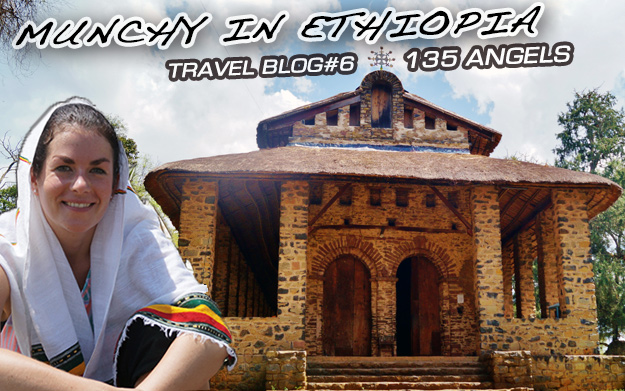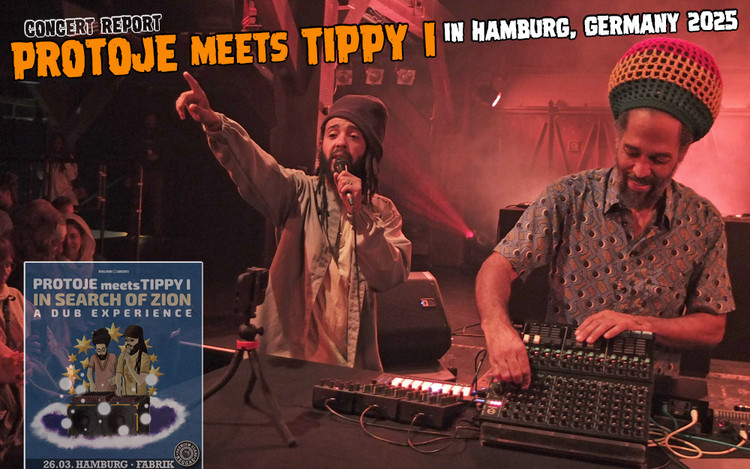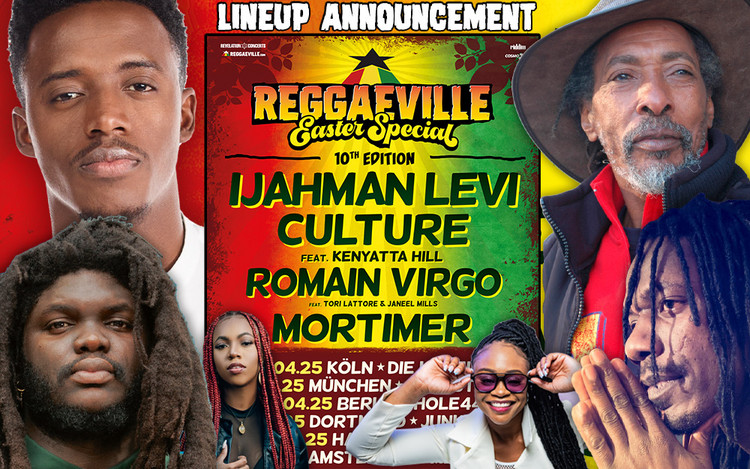Munchy in Ethiopia - 135 Angels (Travel Blog #6)
12/08/2015

Munchy in Ethiopia - Travel Blog Day 6
CLICK HERE TO VIEW THE PHOTO BLOG!
Carsten, who had only two days of vacation left last night to attend the World Energy Council in Addis Ababa, but Wouter and I still roll together and our destination is 110 miles to the North. We leave Bahir Dar in the early morning by bus. Next stop: Gondar!
You may have the best vehicle in this country, and drive on proper roads, but even the shortest distance can take you a good little while because donkeys and cows will always cross and horse carts will hinder the traffic inevitably. The bus ride is an amazing new experience in contrast to my previous flight from Addis to Bahir Dar. Finally I get to actually drive through all these hills and valleys that I saw from the plane. Switchback roads meander up and down through the highlands. Wide views alternate with fascinating rock sculptures and little villages that appear every now and then by the roadside.
Three hours later we reach the town that contributes again a new aspect to Ethiopia’s diversity. After the modern capital Addis with its around 6 million inhabitants and the summery Bahir Dar with palm trees and lakefront walkway we are now in the third largest city with a population of around 350,000 people and a remarkable history that has given the place its nickname “Camelot of Africa”. Where this title is rooted in Wouter and I see right as we exit the mini-bus: the huge Fasilides’ castle, part of the Royal Enclosure, is looming over the relatively small inner city buildings of Gondar right by Meskel Square, our final stop.  I admit that the importance of this region wasn’t that clear to me up until now – also not its tourism value. More than I have seen in any other place so far forenjis are everywhere, so are (self-proclaimed) tour guides. Like vultures around the victim they gather around Wouter and me but lose interest in me quickly when I announce that I will not go hiking in the nearby Simien Mountains. My Belgian friend will, so he is now the one who has to listen to all the different offers, hot deals and special discount prices, while I kick back and take it easy for the rest of the day enjoying a beautiful sunset from our balcony.
I admit that the importance of this region wasn’t that clear to me up until now – also not its tourism value. More than I have seen in any other place so far forenjis are everywhere, so are (self-proclaimed) tour guides. Like vultures around the victim they gather around Wouter and me but lose interest in me quickly when I announce that I will not go hiking in the nearby Simien Mountains. My Belgian friend will, so he is now the one who has to listen to all the different offers, hot deals and special discount prices, while I kick back and take it easy for the rest of the day enjoying a beautiful sunset from our balcony.
Before Wouter will eventually embark on a four day hike in the Ethiopian Highlands we have one day to dive into a most extensive history lesson that starts with the Royal Enclosure. The areal of this fortress-city covers about 70,000 square meters and is surrounded by a 900 meter long wall with twelve gates. Situated there are several castles, churches, but also an ancient steam-bath, a former music hall that is said to have had magnificent acoustics, stables, and a comprehensive library. The royals sure knew how to live that life! The first and biggest palace was built by Emperor Fasilides by the middle of the 17th century, who chose the place not just for strategic advantages but also because of the altitude that is free from malaria mosquitoes. Turning Gondar into his permanent place of residence and therefore the capital of the country, marked a major change from the former Emperors’ tradition of moving from place to place every few years. Fasilides’ descendants all built their own castle on the compound which led to the complex that we can visit today. The architecture varies as time changed and is influenced by Hindu and Arab styles but also the Baroque brought there through Jesuit missionaries.
Before the mass around noon the church of Debre Berhan Selassie is next up on today’s timetable. We have got to hurry a bit, because of course as tourists we don’t want to disturb the holy ceremony. With a tuk tuk we make up some time and do a good deed at the same time, as we share the ride with one of the priests. Before entering the church our guide reads the rules to us that include of course as always taking off your shoes but also a paragraph about the last sexual intercourse. Let's not get into detail, but Wouter and I are allowed to go inside – through separate entrances though for men and women. Unlike the churches we have visited previously Debre Berhan Selassie that dates back from the end of the 17th century is not a circular church but rectangular with a wall of twelve stone towers representing the apostles surrounding it.  Also the inside differs as the Holy of Holies is not in the middle but at the front. Centrally located is the priests speaker’s desk. In front of it are several big drums for the ceremony. Walking sticks that are also used for rest to lean upon pile up on the floor. We still have some minutes and our friendly and extremely competent guide Antena uses the time to rush through Jesus’ biography that is painted on one of the side walls. The interior is entirely covered with impressive colorful and detailed murals, also the ceiling that represents the omnipresence of God with 135 cherubs looking down on us. Give thanks for guidance and protection!
Also the inside differs as the Holy of Holies is not in the middle but at the front. Centrally located is the priests speaker’s desk. In front of it are several big drums for the ceremony. Walking sticks that are also used for rest to lean upon pile up on the floor. We still have some minutes and our friendly and extremely competent guide Antena uses the time to rush through Jesus’ biography that is painted on one of the side walls. The interior is entirely covered with impressive colorful and detailed murals, also the ceiling that represents the omnipresence of God with 135 cherubs looking down on us. Give thanks for guidance and protection!
For our last stop we move by tuk tuk again to reach across the city, to the North West by Lesser Angereb River. Its water fed Fasilides’ Bath, the Emperor’s own water castle. He knew how to use the difference in altitude to redirect the water from the river to fill up the big pool surrounding a little palace on several pillars. We can only look at the building from the outside and also the basin is empty. In modern times it is only filled up once per year, for Timkat, the Ethiopian Orthodox celebration of Epiphany on January 19, the holiest holiday. On that morning the priests hold services at the bath. They bless the waters after which the cheerful crowd jumps into it in celebration of Jesus’ baptism in the Jordan River.
Wouter, Antena, and I take a seat on the wooden stand that was built for the tourists that visit for Timkat, to hold a rest after our marathon and enjoy the view overlooking the historical site. It was an interesting day literally revisiting Ethiopia’s rich history with its dynasties, the changing architecture and the consistent religion.
CLICK HERE TO VIEW THE PHOTO BLOG!









